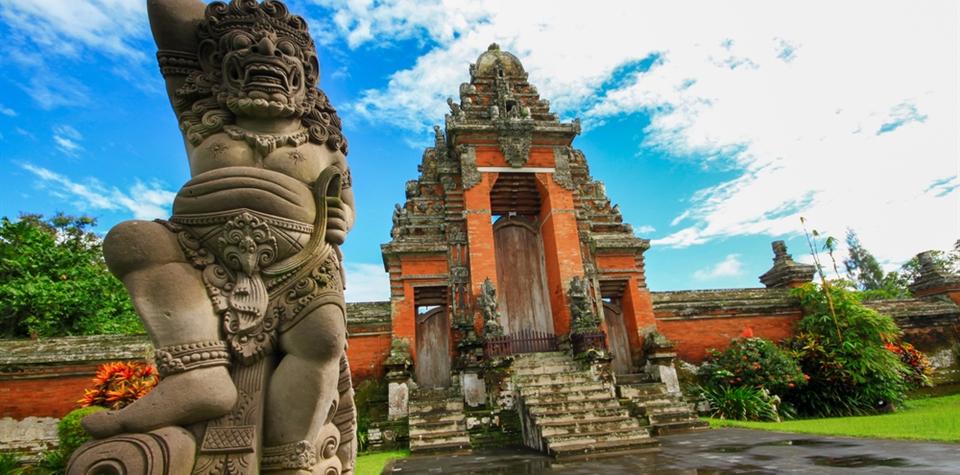The temple of Pura Taman Ayun, is a landmark in the village of Mengwi, Badung Regency, located 17 km northwest of Denpasar, This temple complex has magnificent traditional architectural features along its courtyards and grounds. It also has extensive gardens with lotus and fish ponds.
The temple was built around 1634 by the then ruler of the kingdom of Mengwi, Tjokerda Sakti Blambangan, with Chinese architectural inspirations. It even underwent a major restoration project in 1937.
Mengwi\’s Temple
The very high steps of the shrines of the temple form most of the profile of Taman Ayun.they constitute a gesture of the people of Mengwi\’s reverence to their deified noble ancestors.because the temple complex is considered the temple of Mengwi\’s mother.

Taman Ayun Temple was to serve as a main site of worship among the Mengwi who need not travel too far to the main large temples, such as Besakih Mother Temple in Karangasem, Batukaru Temple in Tabanan or Batur Temple in Kintamani.it also served as a unifying symbol between the Mengwi royalty and the people.
As told in the ancient texts of «Adhiparwa», the whole complex of Taman Ayun Temple represents the Mount Mahameru in the so called «Milk Sea Shake» or the cosmic formation of the world. The name .Taman Ayun.is translated as . The vast surrounding pools were once royal recreational places for the palace maids who would sail small canoes. now the pools and ponds are fenced in and visitors are denied entry.
The interior of the Temple of Pura Taman Ayun
Inside, near the entrance there is a small guardian shrine and, on the right, a large hall .wantilan.where community meetings take place.a high fountain with pipes that protrude and come out to the cardinal points can be seen in this area. On the next court, you can see a small temple composed of the name Pura Luhuring Purnama.
The second and third terraces are slightly higher than the first one. To enter, visitors must go through a second door, where a shelter called Bale Pengubengan greets them with ornamental elements that represents the nine Hindu gods that guard the nine cardinal points, known as Dewata Nawa Sanga.

To the east of this court is a small temple called Pura Dalem Bekak, while in its western corner is a wooden bell tower eight meters high known by the locals as «Bale Kulkul». A climb will reveal two hanging rectangular wooden bells, plus a high and spectacular view of the whole complex.
The fourth and final court is considered the most sacred, therefore, it occupies the highest place.it is known as Utama Mandala. The intricately decorated central door is open only during ceremonies, as the entrance for consecrated relics and other ceremonial paraphernalia. Another door in its east is for daily access. Several levels of different contours and sizes rise in the horizon of the temple. The three motifs of the temple denote the three cosmological levels known to Balinese Hinduism, namely the world of man, the kingdom of the gods and deities, and the highest divine level.


